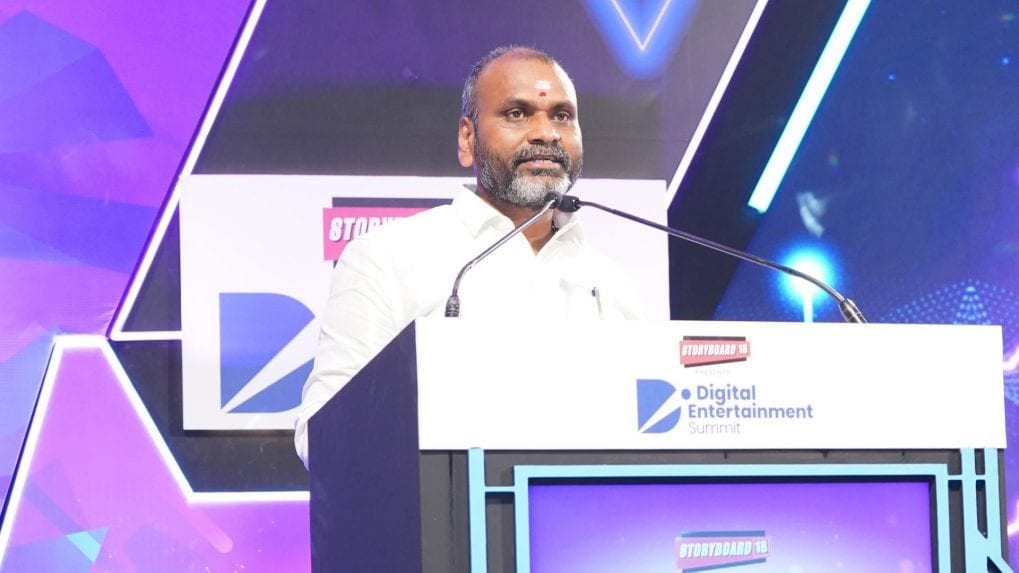"Govt aims to enable fair competition in TV ratings": Dr. L. Murugan, MoS I&B Ministry
The proposal also aims to remove certain restrictive provisions that currently limit the participation of media houses, thereby paving the way for a more pluralistic and competitive television rating environment.
ADVERTISEMENT
On Wednesday, the minister of State for Information and Broadcasting and Parliamentary Affairs, Dr. L. Murugan responded to an unstarred question pertaining to the Broadcast Audience Research Council (BARC).
Minister of State for Information and Broadcasting and Parliamentary Affairs, Dr. L. Murugan, confirmed that the government has published draft amendments to the Policy Guidelines for Television Rating Agencies in India (dated January 16, 2014) for public consultation on the Ministry's website.
“Proposed reforms aim to enable fair competition, generate more accurate and representative data, and ensure that the TRP system accurately reflects the diverse and evolving media consumption habits of viewers across the country,” Dr. Murugan said.
The proposal also aims to remove certain restrictive provisions that currently limit the participation of media houses, thereby paving the way for a more pluralistic and competitive television rating environment.
The draft policy is undergoing public consultation, with views being solicited from experts, stakeholders, various committees, and task forces. The government is reviewing feedback and recommendations received to tailor the changes to suit contemporary conditions and technological advancements in media consumption.
The move is being closely watched by the broadcast and advertising industries, where Television Rating Points (TRPs) play a crucial role in programming and ad revenue decisions. Currently, BARC operates as the sole body providing television audience measurement in India — a structure some stakeholders have criticised for lack of transparency and monopolistic practices.
Earlier, The Ministry of Information and Broadcasting (MIB) had called for major reforms to India’s television audience measurement system, in a first the Ministry had cited critical gaps in how the current framework captures viewership in a digital-first era.
In its assessment, the Ministry had stated: “India currently has approximately 230 million television households. However, only about 58,000 people meters are presently used to capture viewership data, representing just 0.025% of the total TV homes.
This minuscule sample, according to the Ministry, undermines the reliability of the Television Rating Points (TRP) system, especially in a country as demographically diverse as India. The current system, managed solely by the Broadcast Audience Research Council (BARC), also fails to include data from smart TVs, OTT platforms, and mobile apps—areas where audience attention is rapidly shifting.
The Ministry further had noted that: “BARC is currently the only agency providing TV ratings. It does not track connected TV device viewership, despite it being a major trend.” This admission underscores the need for an updated ratings framework that reflects contemporary viewing patterns across platforms and devices.
The Ministry had further stated, "Moreover, the existing audience measurement technology does not sufficiently capture viewership on emerging platforms such as smart TVs, streaming devices, and mobile applications, which are witnessing growing adoption among audiences. This gap between evolving viewing patterns and the current measurement framework can affect the accuracy of ratings, which in turn may influence revenue planning for broadcasters and advertising strategies for brands."
One of the central goals of the proposed amendment is to democratise the TV ratings industry. MIB acknowledged, “Existing policies had entry barriers that discouraged new players from entering the TV ratings sector.”
Key among those barriers were clauses preventing broadcasters or advertisers from investing in rating agencies, as well as strict limitations on company activities outlined in the Memorandum of Association. The revised Clause 1.4 now states “The company shall not undertake any activity like consultancy or any such advisory role, which would lead to a potential conflict of interest with its main objective of rating.”
The Ministry has also proposed removing clauses 1.5 and 1.7—long viewed as hurdles for new entrants. The goal, it said, is to “Allow multiple agencies to foster healthy competition, bring in new technologies, and provide more reliable and representative data especially for connected TV platforms.”
The Ministry has invited feedback from industry stakeholders and the general public within 30 days of the draft’s issuance. It emphasized that the reforms aim to allow multiple agencies to foster healthy competition, bring in new technologies, and provide more reliable and representative data especially for connected TV platforms.
MIB further stated that, "As viewing habits evolve, so must the way we measure them. The amendments will also enable more investments from broadcasters, advertisers, and other stakeholders to improve rating technology and infrastructure. With these reforms, India aims to build a more transparent, inclusive, and technology-driven TV rating ecosystem."
Read More: MIB opens ratings market: Without Census, TRP reboot risks data gaps, warn experts
Read More: Breaking: MIB proposes amendments to TRP guidelines, seeks public feedback
Read More: AIDCF to MIB: DTH giants getting ‘Free Ride’ on public spectrum, opposes fee cut


